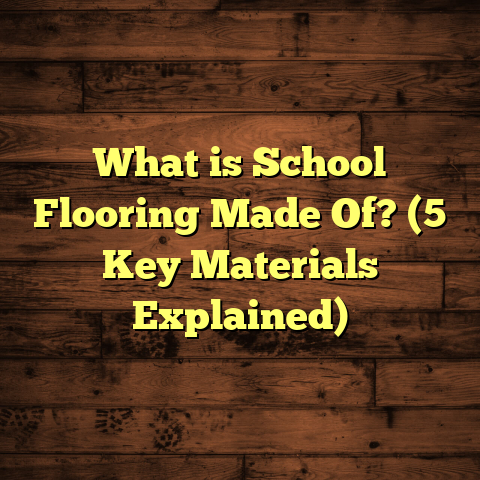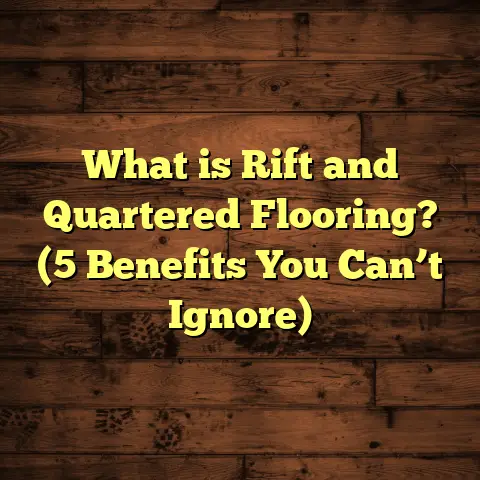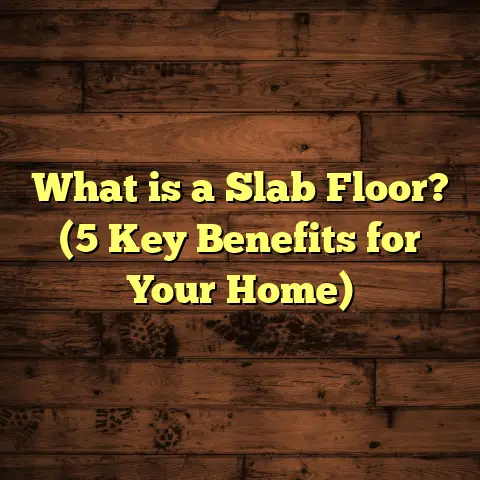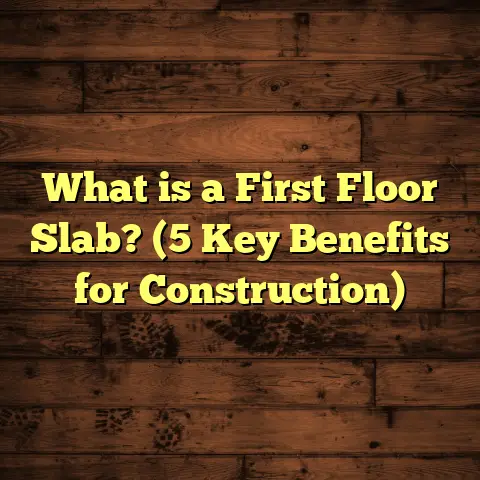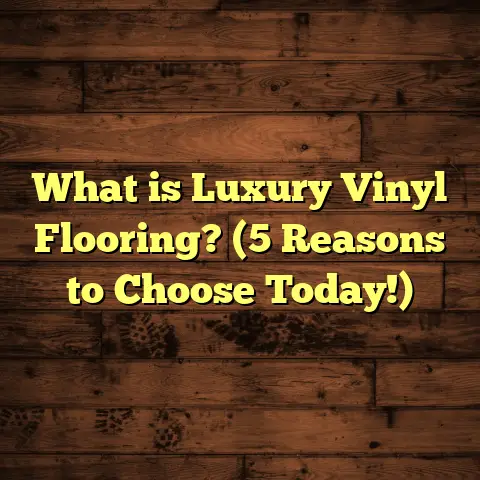What is a Dance Floor? (5 Trends That Ignite Every Party)
Ever been at a party where the music is great, the vibe is just right, but people aren’t really moving? You might wonder why the energy feels flat. For me, that’s often a sign that something’s missing on the floor — literally. A dance floor isn’t just a spot to move your feet; it sets the mood and invites people to let loose. Let me share what I’ve learned about dance floors over the years, from my own experiences and some interesting trends that can turn any event into a party everyone talks about.
What Is a Dance Floor?
A dance floor is simply an area specifically designed for dancing. It’s usually a smooth surface that allows people to move comfortably and safely while enjoying music. But it’s more than just a patch of space. Dance floors come in all shapes, sizes, and materials, each influencing how people interact with the environment and the music.
You’ve probably seen various types of dance floors — from shiny hardwood in classy ballrooms to colorful LED panels at nightclubs. What makes them special is their design and construction, which can affect everything from the sound to the dancers’ comfort.
The Basics of Dance Floor Materials
Here’s where things get interesting. The choice of material impacts not only how the floor looks but also how it feels underfoot and even how safe it is.
- Hardwood is classic. It offers a natural bounce and warmth, which is why it’s common in professional dance studios.
- Vinyl and Laminate floors are budget-friendly options that mimic wood or other surfaces.
- Marley floors are popular in theater settings because they provide a smooth, non-slip surface.
- LED floors or glass panels add a modern twist with lighting effects that respond to movement.
From my experience installing floors for events, I’ve noticed that people tend to stay longer on floors that feel comfortable and look inviting. The right choice depends on the event type, budget, and desired atmosphere.
I remember one time setting up a dance floor for a community event in a local park. We chose a modular vinyl floor because it was lightweight and weather-resistant. It was fascinating to watch kids, parents, and seniors all come together on that surface — the floor was unassuming but created this shared space for fun. That day reminded me how a well-chosen dance floor can bring people closer.
Why Surface Quality Matters
You might think any flat surface works for dancing, but the quality of the floor can make or break the experience. Slippery floors cause falls; rough or uneven floors hurt feet and ankles; overly hard floors tire dancers quickly.
Studies show that dance injuries often stem from improper flooring. A 2019 study published in the Journal of Dance Medicine & Science found that floors with proper shock absorption reduce injury risk by nearly 35%. So when choosing or designing a dance floor, safety should be top of mind.
Why Does the Dance Floor Matter So Much?
Think back to any party you loved. Was there a certain spot where everyone naturally gathered? Usually, that’s the dance floor. It’s more than just a functional space — it’s where social energy builds up.
When I started working with clients to design floors for weddings or corporate events, I learned that the dance floor can make or break the vibe. Too small? People feel cramped and hesitate to dance. Too slippery? Risk of falls kills the fun. Too dull? No one feels the urge to move.
There’s actual data showing how dance floors affect party dynamics. According to a study by Eventbrite, 78% of partygoers say that the quality of the dance floor influences their decision to dance at an event. That’s huge! Even something as simple as adding colored lighting or texturing the floor can boost participation.
I also noticed that music alone doesn’t guarantee dancing — the environment needs to invite it too. At one wedding I worked on, despite great music, guests barely danced until we installed portable wooden flooring over concrete. Suddenly, people felt safer and more comfortable moving around.
5 Trends That Ignite Every Party
Now, let me tell you about some trends I’ve seen light up dance floors everywhere — from backyard weddings to massive festivals. These are the game-changers that bring people onto their feet.
1. Interactive LED Dance Floors
Imagine a floor that lights up under your feet, changing colors or patterns as you move. I first installed one of these at a client’s wedding a few years back. The guests went wild, and even those who usually sit out found themselves drawn in.
These LED floors use pressure sensors or motion detectors linked to lights beneath transparent panels. They’re perfect for creating an immersive atmosphere. According to a recent survey by Event Tech Live, interactive flooring can increase dance participation by up to 40%.
One particularly memorable event was a fundraiser where we installed an LED floor that responded not only to movement but also synced with live DJ beats. Watching how people instinctively moved toward lit areas reminded me how technology can amplify human connection.
The cost of these floors varies widely—basic setups start around $20 per square foot and can go up significantly with custom programming or larger areas. But for events wanting wow-factor moments, LED floors deliver unmatched excitement.
2. Sustainable Flooring Options
Sustainability isn’t just a buzzword—it’s becoming part of event planning culture. I’ve worked with eco-conscious clients who prefer bamboo or reclaimed wood for their dance floors. Bamboo grows quickly and has natural durability, making it ideal for temporary setups.
Besides being environmentally friendly, these materials bring a unique aesthetic that stands out in photos and memories alike. Plus, guests often comment on how “warm” and inviting the floor feels.
I once coordinated an outdoor wedding where we used reclaimed barn wood flooring sourced from local farms. The couple loved telling their guests about its history while dancing on it under twinkle lights — adding a layer of meaning beyond beauty.
According to data from Green Event Alliance, venues using sustainable flooring report higher guest satisfaction scores by approximately 12%, showing that attendees appreciate environmentally friendly choices even subconsciously.
3. Portable Modular Floors
Hosting events in different venues? Modular floors are a lifesaver. They come in sections that snap together, making setup quick and adaptable for any space.
I remember helping set up one for an outdoor festival where weather was unpredictable. The modular system allowed us to create a dry, level surface quickly after rain started pouring. These floors usually come with anti-slip coatings and are strong enough to support heavy foot traffic.
Industry reports show modular floors have grown in popularity by 25% over recent years because of their flexibility.
Beyond festivals, modular floors are great for pop-up parties or corporate events where time is tight but impact needs to be high. Some systems also feature interchangeable panels allowing quick design changes — imagine switching from plain black tiles for formal events to bold colors for casual ones without replacing the whole floor.
4. Themed and Custom Designs
Want your dance floor to be unforgettable? Customization is key. From geometric patterns to logos or even glow-in-the-dark paint, people are getting creative.
One client wanted their company logo embedded right into the floor for a product launch party. We used vinyl decals sealed under a glossy layer, which made the brand presence subtle yet impactful.
Custom floors add personality and make guests feel like they’re part of something special — turning ordinary parties into memorable experiences.
For weddings, couples often choose monograms or date imprints on the dance floor, making photos stand out for years to come. These design choices aren’t just decorative; they create emotional connections guests remember long after.
5. Hybrid Flooring for Mixed Use Spaces
Sometimes a space needs to serve multiple purposes—think dining areas that turn into dance zones later in the evening. Hybrid flooring solutions combine durability with comfort and style.
I’ve installed floors with cushioned sublayers topped with hardwood or vinyl surfaces that can handle chairs one minute and dancing feet the next. These floors reduce noise and fatigue, helping guests stay energized longer.
According to a report by Venue Solutions Magazine, spaces with hybrid flooring see higher guest satisfaction scores by about 15%.
One challenge I often face is balancing aesthetics with function — this trend helps solve that by giving venues flexibility without sacrificing quality or comfort.
Deeper Look: How Dance Floors Influence Party Psychology
Have you ever noticed how some parties just “feel right”? The secret often lies below your feet. Dance floors subtly influence mood and social behavior.
A research paper from Psychology Today explains how physical environments affect social interaction. Floors with vibrant colors or interactive elements stimulate dopamine release — making people happier and more willing to engage socially.
I’ve seen this firsthand at events where we chose bright-colored modular floors versus plain gray ones. Guests tended to be more playful and energetic on colorful surfaces.
Even flooring texture matters psychologically — softer surfaces encourage longer dancing sessions because they reduce foot fatigue.
Personal Stories From The Field
I’ve installed dance floors at hundreds of events—each unique but all teaching me something new:
- At one corporate gala, we used an LED floor combined with fog machines creating an immersive experience that had executives dancing like teenagers.
- For a local community center’s annual party, we built a simple yet sturdy hardwood floor over concrete — kids who normally preferred sitting down were suddenly front and center.
- A couple once told me their wedding floor “saved” their reception because guests who felt awkward dancing elsewhere were drawn in by its smooth finish and warm lighting underneath.
These stories highlight how important thoughtful flooring choices are beyond just function.
Costs You Should Know About
Budgeting for flooring can be tricky if you don’t know what goes into pricing:
- Basic vinyl flooring: $2–$5 per square foot
- Hardwood flooring: $8–$15 per square foot
- LED interactive flooring: $20–$50+ per square foot depending on features
- Modular portable systems: $10–$30 per square foot
- Installation costs can add 20–50% depending on complexity
Don’t forget extra costs like underlayments for cushioning or moisture barriers if outdoors.
Using tools like FloorTally can help get accurate estimates based on your area’s labor rates and materials — saving you surprises later on.
Maintaining Your Dance Floor
A great floor also needs care:
- Hardwood floors require regular cleaning with appropriate products to avoid scratches.
- Vinyl floors should be swept frequently and mopped with non-abrasive cleaners.
- LED floors need careful maintenance of electrical components.
- Modular floors benefit from easy panel replacement if damaged without full teardown.
Proper maintenance extends your investment’s life and keeps guests happy throughout many events.
What I’ve Learned About Dance Floors Over Time
If I had to sum up what makes a great dance floor after years of hands-on work:
- Match the floor type to your event purpose.
- Consider guests’ comfort and safety first.
- Don’t skimp on quality; it pays off in guest enjoyment.
- Use technology thoughtfully — not just for show but to enhance interaction.
- Think about sustainability if possible.
- Make your floor part of your event story — personalize it!
Extra Trends Worth Watching
Since we covered five major trends already, here are some emerging ones I’m excited about:
- Augmented Reality Floors: Imagine projecting interactive AR visuals dancers can control through movement.
- Smart Floors: Floors embedded with sensors tracking crowd movement data in real-time to optimize lighting/music dynamically.
- Biophilic Design Floors: Incorporating natural elements like moss panels or stone textures for immersive nature-inspired parties.
- Sound-Responsive Flooring: Floors vibrating gently matching music beats creating physical sensations complementing audio.
These might sound futuristic but tech advances are making them more accessible each year.
Wrapping Up
So when you think about planning your next event or upgrading your space, don’t overlook the dance floor. It’s more than just wood or vinyl—it’s where memories are made and energy flows.
If you want people talking about your party long after it ends, choose a floor that invites movement, fits your style, and keeps everyone comfortable. Whether it’s through high-tech LED panels or eco-friendly bamboo planks, your dance floor is where every good party starts.
Got questions about what kind of floor would work best for your event? I’m here to help with tips based on real-world experience!
